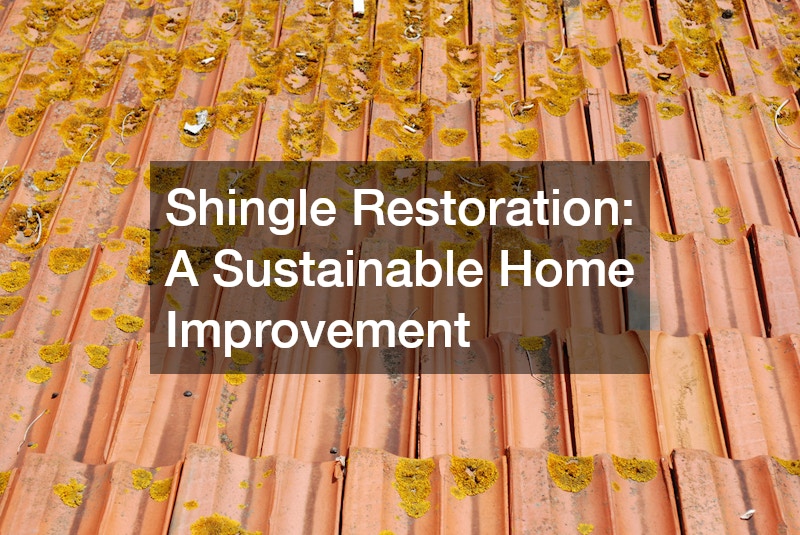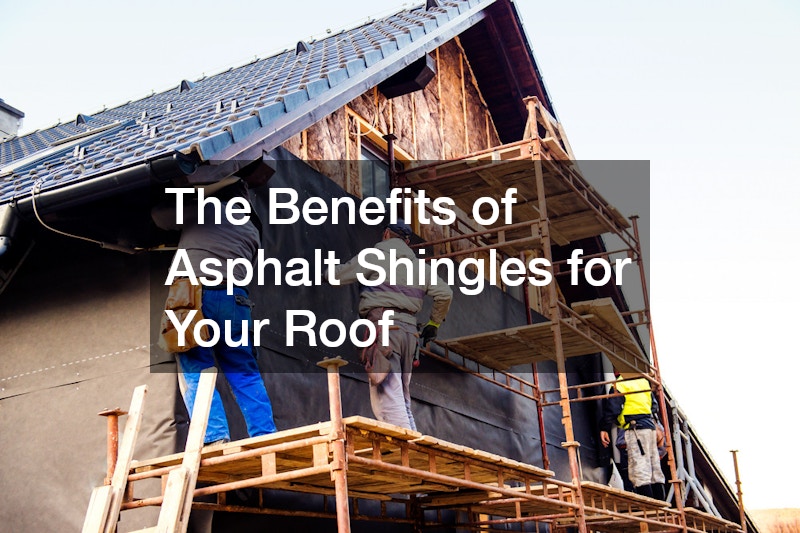Roof Shingle Restoration
Shingle restoration has become an increasingly popular choice for homeowners seeking sustainable home improvement options. Unlike a complete roof replacement, which can be costly and contribute to landfill waste, shingle restoration focuses on preserving and enhancing the existing materials. This process not only saves money but also reduces the environmental footprint associated with manufacturing and transporting new shingles. With rising awareness about sustainability, more homeowners are interested in how shingle restoration can extend their roof’s life span while minimizing environmental impact.
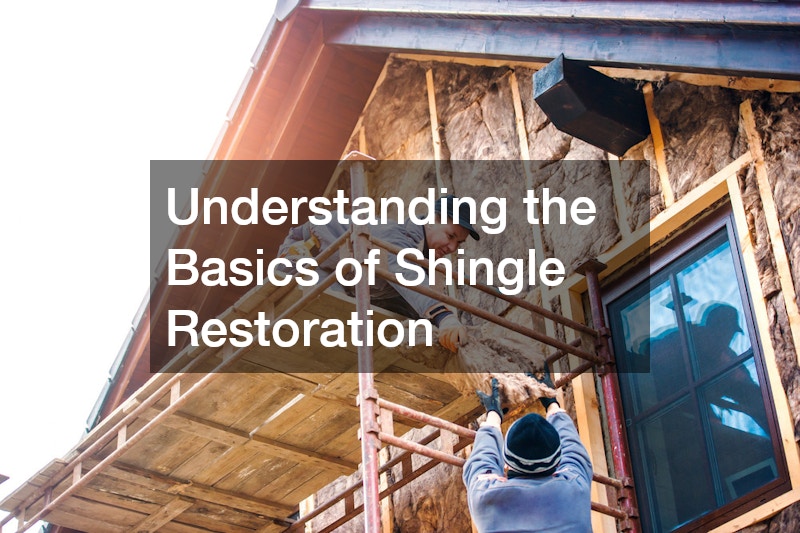
Understanding the Basics of Shingle Restoration
Shingle restoration is a practical solution for homeowners looking to maintain their roofs without the need for a complete replacement. This process includes thorough cleaning, repairing, and reinforcing shingles to extend their lifespan. Shingle restoration doesn’t just address visible damage but strengthens the overall structure of the roof. By focusing on preserving and restoring existing shingles, homeowners save both money and resources, making it a cost-effective option. Restoration allows homeowners to maintain their roof’s original look while enhancing its resilience, helping to protect it from environmental stressors like wind, rain, and sun exposure. This preventative approach means that homeowners can avoid more extensive damage that might lead to costly repairs or replacements in the future.
When selecting a professional for shingle restoration, homeowners should seek out a local roofing contractor who specializes in this specific service. Local roofing contractors often bring valuable knowledge of area-specific weather patterns and common roofing issues, making them well-equipped to handle any challenges that arise. These professionals can assess the condition of the shingles and determine the necessary treatments to restore their durability and appearance.
Benefits of Shingle Restoration for Sustainability
One of the greatest advantages of shingle restoration is its alignment with sustainable practices. Instead of disposing of old shingles and replacing them with new ones, restoration allows homeowners to extend the life of their existing roof, reducing waste and resource consumption. By choosing shingle restoration, homeowners contribute to lower emissions, as it reduces the demand for manufacturing new shingles and the associated transportation of materials. Additionally, restoring a roof requires fewer resources and less energy than a full replacement, making it a more environmentally friendly option. For those looking to minimize their ecological footprint, shingle restoration offers a practical way to maintain a functional and attractive roof without contributing to the growing problem of construction waste.
Incorporating environmentally responsible services, such as roof washing, further enhances the sustainability of shingle restoration. Roof washing helps remove accumulated dirt, mold, and debris, which, if left untreated, can accelerate wear on shingles. By regularly washing the roof, homeowners not only restore the original appearance of their shingles but also prevent damage that might otherwise lead to premature replacement.
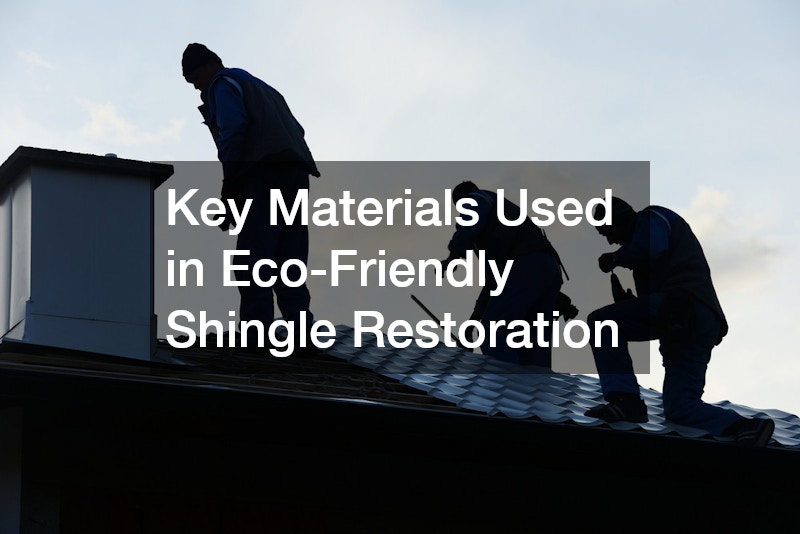
Key Materials Used in Eco-Friendly Shingle Restoration
Eco-friendly shingle restoration involves using materials that are both effective and environmentally responsible. As homeowners grow more conscious of the environmental impact of their home improvement projects, they often seek out restoration products that reduce waste and emissions. Key materials in shingle restoration include sustainable sealants, eco-friendly cleaning agents, and high-quality protective coatings that help extend the life of the shingles. These products are designed to work with existing shingles to restore their durability and appearance without introducing harmful chemicals into the environment. By choosing eco-friendly options, homeowners can feel confident that their shingle restoration project supports sustainability goals and contributes to a reduced carbon footprint.
In some cases, chemical grout injections may be used as part of the restoration process to reinforce the roof structure and seal potential leaks. Chemical grout injections involve injecting specialized, eco-friendly grout into areas that may have weakened over time, providing additional support and waterproofing capabilities. This method not only strengthens the existing shingles but also prevents water damage, reducing the likelihood of future repairs.
Environmental Impact of Traditional Versus Restored Shingles
When comparing traditional shingle replacement with shingle restoration, the environmental benefits of restoration become evident. Traditional replacement involves removing old shingles, which often end up in landfills, and installing new ones—a process that requires significant energy and resources. Shingle restoration, on the other hand, is a sustainable alternative that minimizes waste and reduces resource consumption. Restoring shingles instead of replacing them avoids the emissions associated with the production and transportation of new materials, helping to lessen the overall carbon footprint of home maintenance. By choosing shingle restoration, homeowners are not only investing in the longevity of their roofs but also making a positive environmental impact by reducing waste.
In climates prone to intense weather, partnering with suppliers like a hurricane window manufacturer can complement shingle restoration for a more comprehensive approach to home protection. This combination strengthens a home’s defenses against harsh environmental conditions without the waste and energy consumption involved in a full replacement. By investing in restoration and storm-resistant upgrades, homeowners can create a home that is not only resilient but also eco-friendly.
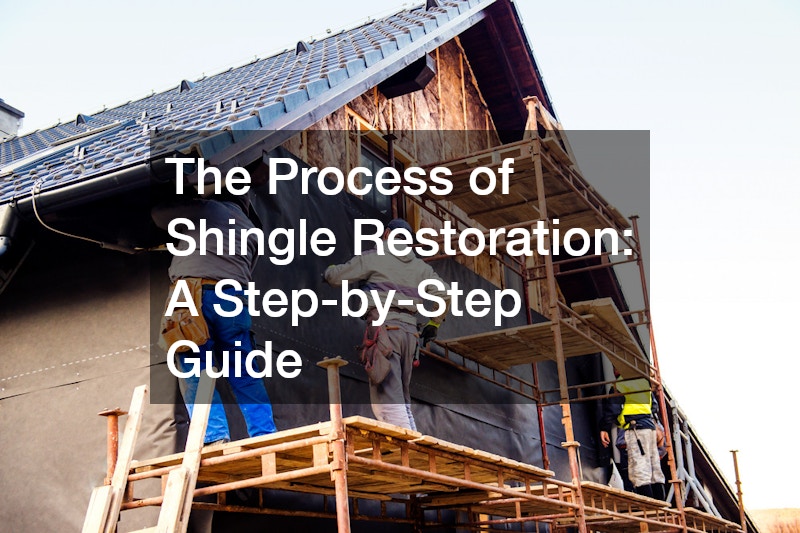
The Process of Shingle Restoration: A Step-by-Step Guide
The shingle restoration process is both thorough and methodical, ensuring that each shingle is treated to optimize its durability and appearance. First, a detailed inspection is conducted to assess the roof’s condition, identifying any areas of weakness, damage, or wear. The shingles are then cleaned to remove dirt, moss, and debris, restoring them to their original color and finish. Following cleaning, damaged areas are repaired, and protective coatings or sealants are applied to reinforce the shingles against future weathering. This step-by-step approach ensures that each part of the roof is restored with care, extending its life span and improving its resilience against natural elements. Shingle restoration not only restores the shingles’ appearance but also fortifies them, allowing homeowners to enjoy a revitalized and structurally sound roof.
To enhance the protective capabilities of restored shingles, many professionals recommend applying a waterproof barrier as part of the restoration process. This barrier provides an additional layer of protection, helping to prevent water infiltration, which can lead to rot, mold, and structural damage over time. By incorporating a waterproof barrier, homeowners can ensure that their shingles remain in optimal condition, even in wet or humid climates.
Assessing the Condition of Your Shingles
Before beginning any shingle restoration project, it’s crucial to thoroughly assess the condition of the shingles to determine the extent of restoration required. This assessment typically involves checking for common issues such as cracks, curling, discoloration, and signs of water damage. By identifying these early indicators of wear and tear, homeowners can address potential problems before they worsen. Regular assessments allow homeowners to gauge when their shingles need attention, helping to maintain the integrity of the roof without needing a full replacement. Shingle restoration, when initiated at the right time, can effectively prolong the life of the roof and prevent small issues from escalating into costly repairs.
For homeowners with tile roofing services, assessing shingle conditions can also reveal underlying structural concerns specific to tile roofs, such as shifting or loosening tiles. Tile roofs, while durable, require occasional attention to ensure that the tiles remain secure and watertight. Working with a shingle restoration professional who understands the unique demands of tile roofing can make a significant difference in the quality of the assessment and restoration process.
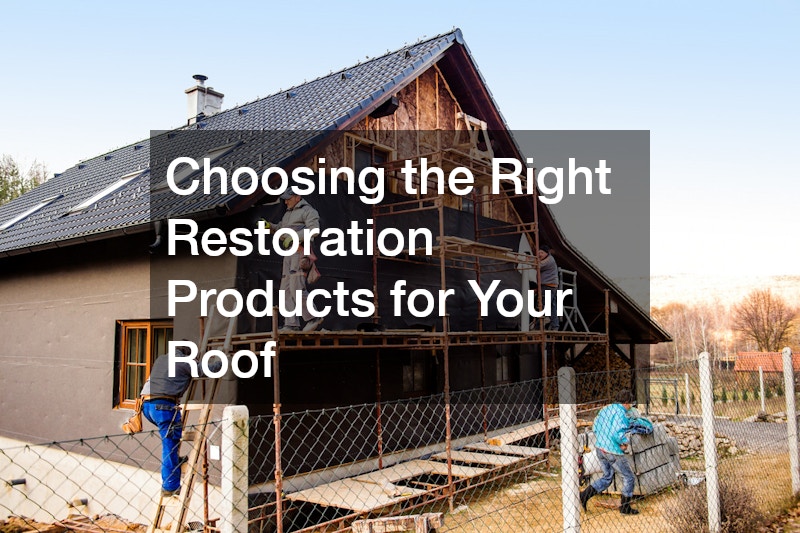
Choosing the Right Restoration Products for Your Roof
Selecting the right products for shingle restoration is essential for achieving long-lasting results. Restoration products such as sealants, cleaners, and protective coatings are available in various formulations, each designed to address specific types of shingle materials and conditions. For example, asphalt shingles may require a different type of sealant than wood or slate shingles, so choosing the appropriate product is key to ensuring proper adhesion and durability. Eco-friendly products are also widely available, allowing homeowners to opt for sustainable solutions that minimize environmental impact. By using the right products, homeowners can ensure that their shingle restoration is both effective and environmentally responsible.
One common product recommended in shingle restoration is sealcoating, a protective layer that enhances shingle resilience against weather and UV exposure. Sealcoating forms a barrier on the surface of the shingles, helping to prevent cracking and fading over time. This product is particularly useful in climates with intense sun exposure, as it reflects UV rays and minimizes the heat absorbed by the roof.
Cost-Effectiveness of Shingle Restoration Compared to Replacement
Shingle restoration is often a more cost-effective solution than a complete roof replacement, offering homeowners the benefits of a revitalized roof without the high expenses associated with installing new shingles. Restoration typically requires fewer materials and less labor than replacement, translating to significant savings. Moreover, restoration can extend the life of a roof by several years, delaying the need for a full replacement and providing long-term cost savings. This affordability makes shingle restoration an attractive option for homeowners seeking an economical way to maintain their roofs while enhancing both aesthetics and functionality.
For those considering the financial advantages of shingle restoration, it’s important to also factor in the reduced frequency of roof repair that restored shingles can offer. By reinforcing existing shingles and addressing minor issues before they worsen, restoration helps to prevent the need for more frequent repairs. This proactive approach to roof maintenance can save homeowners money on repairs over time, as restored shingles are better equipped to withstand the elements and remain in good condition.
Enhancing Curb Appeal Through Sustainable Shingle Restoration
Shingle restoration not only improves the durability of a roof but also enhances the overall curb appeal of a home. By restoring shingles to their original condition, homeowners can refresh the appearance of their roof, making it look well-maintained and attractive. This renewed look can elevate the visual appeal of the entire property, which is particularly beneficial if the home is being prepared for sale. Shingle restoration often includes color rejuvenation and surface cleaning, bringing vibrancy and a like-new appearance to weathered shingles. As a result, shingle restoration adds aesthetic value in addition to the structural benefits it provides, making it a valuable investment in both form and function.
Part of this aesthetic improvement can involve a mold removal service as part of the restoration process. Mold, algae, and mildew can accumulate on shingles over time, especially in humid or shaded areas, leading to unsightly discoloration and potential damage. By including mold removal in the restoration plan, homeowners can address these issues and restore the original color and look of the shingles, giving their home a fresher, cleaner appearance. Mold removal not only boosts curb appeal but also helps protect the shingles from damage, ensuring that they stay in optimal condition for years to come.
Long-Term Maintenance Tips for Restored Shingles
To maximize the benefits of shingle restoration, homeowners need to adopt a proactive approach to roof maintenance. Regular inspections, seasonal cleanings, and minor repairs can prevent small issues from escalating and extend the life of the restored shingles. By taking steps to maintain the roof’s integrity, homeowners can keep their restored shingles looking and functioning their best over time. Simple actions, such as clearing debris from the roof and ensuring proper attic ventilation, can help protect shingles from wear, preserving their durability and appearance. Long-term maintenance helps protect the investment in shingle restoration, ensuring the roof remains a resilient and attractive feature of the home.
In cases where previous water damage has occurred, scheduling a water damage restoration service can be particularly beneficial. Water damage can weaken shingles and underlying structures, so addressing it promptly can prevent further issues. Restoration professionals can assess any existing water damage and take corrective steps to reinforce the affected areas, reducing the risk of mold and rot. By combining shingle restoration with water damage restoration services, homeowners create a more robust, well-protected roof that is both visually appealing and structurally sound.
Maintaining Your Refurbished Roof
Shingle restoration stands out as an effective, sustainable approach to maintaining a durable and attractive roof. By focusing on preservation and enhancement rather than replacement, homeowners can enjoy the benefits of a well-maintained roof while reducing waste and conserving resources. Shingle restoration involves cleaning, repairing, and reinforcing existing shingles, resulting in a roof that not only looks refreshed but is also better equipped to withstand environmental elements. With the use of eco-friendly materials and services such as roof washing, waterproof barriers, and sealcoating, shingle restoration offers a comprehensive, environmentally responsible solution for home improvement.

